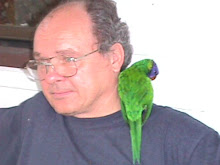
The idea was to use Staffordshire Stray as a vehicle for those birding trips beyond Allen Road and the wider South Burnett region. It seemed that our excursion to South Australia, more specifically to McLaren Vale and the Barossa Valley, with quick jaunts into the Adelaide Hills and the Clare Valley [the latter purely for nostalgic reasons going back to 1989] would provide the ideal starting point for the revival of this blog. And it almost has.
South Australia was never going to be a purely birding trip, the area is overflowing with good wine- some of the reds would compete more than favourably with the finest from most other viticultural corners around the globe and a good Clare Valley riesling is to die for. Our travelling companions, while having a general interest in birds- Tom’s imitations of the Pied Butcherbird Cracticus nigrogularis call are something else-their watching rarely extends beyond feeding their backyard birds. They do however share a passion with us for good food and fine wine. Ann’s ability to unearth local Brisbane gastronomic gems has become legendary.
Our forebodings of this trip as a birding venture were borne out, just as our hopes of tasting a large variety of top Australian wines was equally fulfilled. As the saying goes, you can’t have your cake [or in this instance a drop of top shiraz] and eat [drink] it.
We started the trip in our usual manner, at the airport, each having to guess as to which species would be ticked first on arrival. Fay opted for the humble Rock Dove Columba livia while I called Australian Magpie Cracticus tibicen. It was a Magpie-lark Grallina cyanoleuca!
No sooner had we unpacked and put ourselves around the first cup of tea than we began adding new additions to the 2011 Year List. Jessica’s Place, in Vine Street, McLaren Vale [highly recommended], had only a small postage stamp of a backyard but it almost immediately provided us with New Holland Honeyeater Phylidonyris novaehollandiae. This dapper little bird featured each morning during our brief stay here.
The humble Common Blackbird Turdus merula, so beloved of English poets, was as common here as it was around Attlee Crescent in Rugeley, Staffordshire. House Sparrows Passer domesticus, Common Starlings Sturnus vulgaris and, at only a small stretch of the avian imagination, Spotted Doves Strepopelia cinensis made the place a Little England beyond the White Cliffs, not that I suppose any self-respecting South Australian would welcome that particular patchwork quilt.
It didn’t take long to discover a small park less than a hundred metres from our accommodation. It became our early morning haven – both Fay and I are early risers, Tom and Ann tend to linger a little longer beneath the bedcovers. The park was good for the Adelaide race of the Crimson Rosella Platycercus elegans: Clements [6th Edition, 2007] has the bird as a full species, Playycercus adelaidae. It was also a favourite haunt of the ubiquitous Magpie-lark and Crested Pigeon Ocyphaps lophotes, the colourful Rainbow Lorikeet Trichoglossus haematodus, the raucous Galah Eolophus roseicapillus and the sombre Little Crow Corvus bennetti. The ever-present Red Wattlebird Anthochaera carunculata was another addition to the Year List.
On the first of only two serious birding trips we added a lifer to our list, a Purple-gaped Honeyeater Lichenostomus cratitius. The Little Raven Corvus mellori, first encountered on our previous 1989 trip to South Australia, paled into insignificance.
From McLaren Vale we made our way towards the Barossa Valley, via a quick stop at Hahndorf in the Adelaide Hills. It was disappointing, tourism, or rather the need to appeal to the tourist dollar, seems to have taken the soul out of the place or perhaps time had smoothed over some of the wrinkles that had been present in 1989. Then it had come across as German, today it oozes tourism – and the coffee we had at some unmemorable and now forgotten café was terrible- coffee that would have been an indictable offence in the homeland of the area’s pioneering fathers.
To add insult to injury we added only two birds to the Trip List, Yellow-tailed Black-Cockatoo Calyptorrhynchus funerus and Australian King-Parrot Alisterus scapularis.
We settled ourselves into Cabernet Cottage, in Mill Street, a stone’s throw from Tanunda’s main thoroughfare. It wasn’t a patch on Jessica’s Place but it served the purpose and there was the brisk walk alongside the hospital to the large parkland area where the birds were, well, more or less similar to those observed in Vine Street. As an alternative we did on a couple of occasions turn right out of the front gate, cross the main street and made our way down to the bridge over the North Para River where we met a retired schoolteacher who along with his wife, Fay, now runs a B&B nearby. The Golden Whistler Pachycephala pectoralis was among the last new additions to the Trip List.
The birding eased, as much to do with an adverse change in the weather as anything else; the wine tasting increased in pace. The final tally amounted to 19 new species on the Year List, one of which was of course a lifer, for a meagre Trip List total of 54 species.
We tasted more wines than that! Perhaps the birding had not been serious enough, the hole in the credit card however, certainly was but then, as Fay would say, we contributed towards promoting the Australian wine industry.



.jpg)
.jpg)






